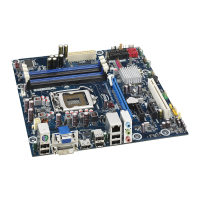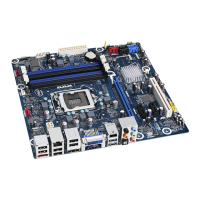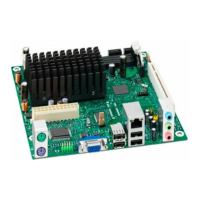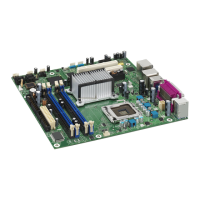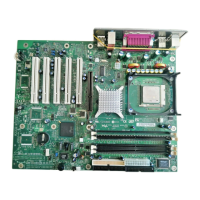Clock Signal Name in Design Description
• AVMM interfaces for reconfiguration
The frequency range requirement is between 100–125
MHz.
• PHY reset controller for transceiver reset sequence
The frequency range requirement is between 1–500
MHz.
• IOPLL Reconfiguration
Maximum clock frequency is 100 MHz.
• RX Reconfiguration for management
• CPU
• I
2
C Master
I
2
C Clock
i2c_clk
A 50 MHz clock input that clocks I
2
C slave, SCDC registers
in the HDMI RX core, and EDID RAM.
Related Links
• Using Transceiver RX Pin as CDR Reference Clock
• Using Transceiver RX Pin as TX PLL Reference Clock
2.5 Interface Signals
The tables list the signals for the Intel FPGA HDMI IP core design example.
Table 15. Top-Level Signals
Signal Direction Width Description
On-board Oscillator Signal
clk_fpga_b3_p
Input 1 100 MHz free running clock
clk_50
Input 1 50 MHz free running clock
User Push Buttons and LEDs
user_pb
Input 1 Push button to control the Intel FPGA
HDMI design functionality
cpu_resetn
Input 1 Global reset
user_led_g
Output 8 Green LED display
user_led_r
Output 8 Red LED display
HDMI FMC Daughter Card Pins on FMC Port B
fmcb_gbtclk_m2c_p_0
Input 1 HDMI RX TMDS clock
fmcb_dp_m2c_p
Input 3 HDMI RX red, green, and blue data
channels
fmcb_dp_c2m_p
Output 4 HDMI TX clock, red, green, and blue data
channels
fmcb_la_rx_p_9
Input 1 HDMI RX +5V power detect
fmcb_la_rx_p_8
Inout 1 HDMI RX hot plug detect
fmcb_la_rx_n_8
Inout 1 HDMI RX I
2
C SDA
continued...
2 Intel FPGA HDMI Design Example Detailed Description
UG-20077 | 2017.11.06
Intel
®
FPGA HDMI Design Example User Guide for Intel
®
Arria 10 Devices
26

